Foto Friday – Flash
 A few weeks ago, I announced a new photography blogging event – Foto Friday. This month, the focus was flash and how to use it to your advantage. (Be sure to watch for the February topic announcement next Friday.) My goal for the month was to find a suitable way to use my flash to photograph food. As most of you know, it is always recommended to use natural light when photographing food. However, now that winter is upon us in full force, the daylight here in Boston only lasts about 8 hours. And of course those 8 hours happen while I’m at work. This has caused me to usually save food to photograph on Saturdays so I can have natural light. But sometimes it’s just not feasible.
A few weeks ago, I announced a new photography blogging event – Foto Friday. This month, the focus was flash and how to use it to your advantage. (Be sure to watch for the February topic announcement next Friday.) My goal for the month was to find a suitable way to use my flash to photograph food. As most of you know, it is always recommended to use natural light when photographing food. However, now that winter is upon us in full force, the daylight here in Boston only lasts about 8 hours. And of course those 8 hours happen while I’m at work. This has caused me to usually save food to photograph on Saturdays so I can have natural light. But sometimes it’s just not feasible.
Now you might be thinking “But Jen, why don’t you just build a light box the way that many of your friends have, including Steph, Amy, Sara, and Clara.” To that I say this: Hubby and I live in a little over 700 square feet. And we have 2 cats. Extra space isn’t something we have and I worry I wouldn’t have a good place to store it. Although Amy’s light box is collapsible, so that could be a possibility.
So back to flash. I started with my trusty Nikon D40 manual and set out to read anything and everything related to flash. I found it online which was a great way to read it.
After reading everything I could about flash (and some other future FF topics), I decided to try to use the flash compensation to control how intense of a flash my D40 gives off. This can only be done in S, A, P, or M mode. The main problem with using a flash without messing with the settings is that sometimes you get some areas of the picture that are washed out. By using the flash compensation I’m hoping to avoid that.
According to the D40 manual,
Flash compensation is used to alter flash output by changing the brightness of the main subject relative to the background. Flash output can be increased to make the main subject appear brighter, or reduced to prevent unwanted highlights or reflections.
So first, here’s how you find flash compensation on the D40 (see page 48 in your D40 manual for details). Check your users manual to do it on your camera. Like most things, there are probably multiple ways to do this, but this is the way I use and I find it very easy to do. First, when the camera is on (yes I did turn it on after I took this picture), hit the info button.
Now, press the little magnifying glass button near the screen. I don’t know it’s official name is.
Now just navigate over to the Flash compensation and hit OK.
Now you are at the Flash compensation screen. It has a nice little picture to help you decide which way you want to set your flash compensation. Values range from -3.0 to +1.0 in increments of 1/3. By setting the compensation to zero, you are using the standard flash.
See how the picture helps to illustrate the difference between the settings.
Now that we know where to find flash compensation, let use it! I actually did this little experiment back in December, when I made these chocolate peppermint cookies. First I started with the standard flash setting. I set my camera to S mode (shutter priority), and set flash compensation to zero.
Be aware that the flash compensation does NOT reset when the camera is turned off. So the last thing you set it to is what it will be the next time you use the camera in that mode.
This picture actually isn’t too washed out. There is a bit of reflection off the plate, but that’s about it. Next I decided to set the flash compensation to +1 just to see what it would look like. I know that will brighten the subject, so it won’t help in this case, but I wanted to see how drastic it was.
As suspected, this picture is very washed out. Now, I set the compensation to -3.
While this picture definitely isn’t washed out, it is very dark. I think something negative, but not quite so negative would be a good solution.
This is the picture from the blog post. I ended up with a flash compensation of about -2.0. Overall I am happy with the picture. You can see some shadows around the edge of the plate and the cookies, but I’d say that it looks pretty good. And the good news is I’ve found a way to take pictures in the dark without building a light box!
Since then, I’ve used this setting for many more food pics. Here are a few other pictures I’ve taken at nighttime.







 I am Jen the Beantown Baker. Engineer by day and baking maven by night. Hubby serves as my #1 fan and official taste tester. We got hitched back in 2006. Barefoot. In the sand. With the waves crashing behind us. It was one of the best decisions we’ve ever made.
I am Jen the Beantown Baker. Engineer by day and baking maven by night. Hubby serves as my #1 fan and official taste tester. We got hitched back in 2006. Barefoot. In the sand. With the waves crashing behind us. It was one of the best decisions we’ve ever made. 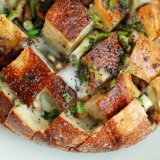

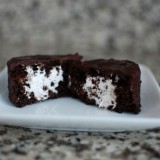
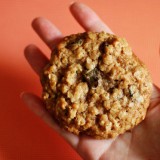
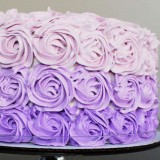
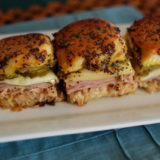


I can hear the leaves rustling!
Love that ipod earplugs one! What a great take on the theme.
/Clara
Thanks!
Now I want to run through a pile of leaves! Nice one!